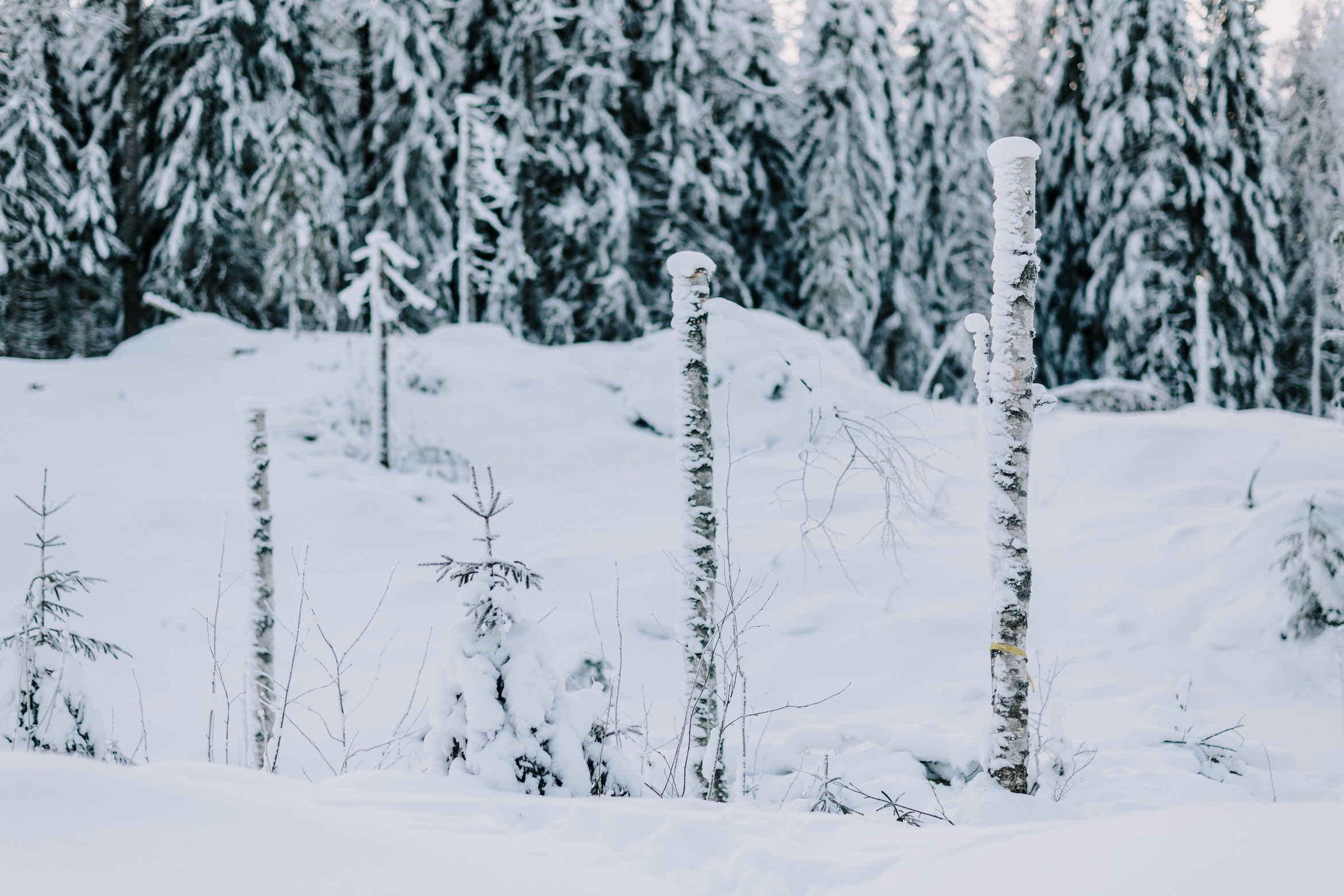The freezing weather nips the cheeks of Jorma and Seija Tolvanen and their forest specialist Tomi Asikainen in Joutseno, part of Lappeenranta, in South Karelia. The couple from Joutseno decided to test the Metsä Group Plus model in felling based on Asikainen’s recommendation last summer. The felling site now has more high biodiversity stumps and retention trees than required by forest certification schemes.
The trio gaze at the site felled last autumn with smiles on their faces. Not even the cold weather dampens their opinion about the felling operation’s success.
The Tolvanens’ spruce forest was hit by the bark beetle last summer, so they decided it was better to renew the already mature forest as quickly as possible. They discussed with Asikainen how best to proceed with the stand.
“Tomi suggested a felling method that pays slightly more attention to nature, and we decided to give it a try. The felling result was good, as is the amount of decaying wood left in the forest. Decaying wood is important for forest species, as it offers them nutrition, protection and breeding grounds. The forest machine operator was a professional who performed the felling as if he had been managing his own forest. We’re satisfied with the result,” Jorma Tolvanen says.
The Tolvanens chose to renew the forest with mixed cultivation of pine and spruce. They expect birch to appear there naturally. The goal is for a mixed forest to grow on the site. The couple manage their forests in accordance with forest management recommendations. To date, they have handled clearing and other forestry work on their own, but from now on, they plan to let forest workers take care of clearing and planting. It is important to manage forests well.
Income from forestry is important, but so is nature management
Jorma Tolvanen has always worked with machinery maintenance in the forest industry, while Seija has worked in child daycare. They believe the forest industry is a vital and key provider of wellbeing in Finland.
It has also provided a livelihood for the Tolvanens and their two children for several decades. The couple appreciate the income from forestry and their commercial forest, but investing in nature management is equally important for them. Forestry and nature management are not mutually exclusive, Jorma Tolvanen says.
In addition to a source of income, forests offer a welcome respite. Jorma hunts, and the couple go berry and mushroom picking together. The estate also has a lean-to where they go to relax. A few years ago, the Tolvanens assigned a small area for permanent protection – also because of Asikainen’s recommendation.
“It’s a rocky, oldish pine-dominated small forest on a big hill. There’s a cliff as well. The site was a challenging place to harvest so it was worth protecting. We received state compensation for permanent protection. That’s another decision we haven’t regretted – quite the contrary,” Seija Tolvanen says.

The good harvesting results and additional bonus will also encourage the couple to choose Metsä Group Plus in the future.
“For us, forestry and nature management go hand in hand. Both of them are important in forest ownership. We believe we will choose the same felling method in the future. It’s also nice that Metsä Group awards the forest owner with additional income if the customer chooses Metsä Group Plus, a natural nature management alternative, as the felling method,” Jorma Tolvanen says.
Text Päivi Anttilainen
Photo Jani Kautto
This text was published in Metsä Group’s Viesti 1/2024.
